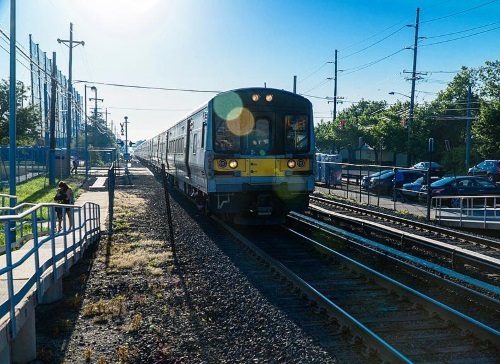A new 37-page report issued by DePaul University’s Chaddick Institute for Metropolitan Development and the Shared Use Mobility Center offers insights to public transit agencies seeking to “bounce back” from ridership collapse due to the COVID-19 pandemic.

The report’s co-authors – DePaul Professors Mallory Livingston and Joe Schwieterman – argue that the “restart” challenges facing transit agencies in the wake of the viral outbreak mean they should have a “strong incentive” to explore new ways to tap into new markets while stretching their limited resources – particularly when it comes to partnering with ride-hailing firms such as Uber and Lyft.
“Some employers may make work-at-home arrangements permanent or adopt more flexible schedule, [thus] fewer traditional rush-hour commuters may travel to and from downtown districts that are well served by traditional transit until virus concerns disappear,” they explained in the report.

“Gasoline prices could remain low until the economy recovers, making driving less expensive,” the y added. “Meanwhile, efforts to expand bus and rail services or sustain little-used routes may become more difficult as governments grapple with revenue shortfalls.”
They believe their research shows that targeted partnerships with Lyft, Uber, and Via for on-demand service can be effective in coping with those scenarios, though launching such programs, however, is not without risk.
“Finding the sweet-spot between being overly generous and overly restrictive can take months or even years,” Livingston and Schwieterman said. As a result, they think transit agencies must focus on several key elements:
- Establish rules that limit the risk of traffic diversion from scheduled bus and train service. This may mean limiting offerings to particular geographic areas or market segments, such as seniors or people with disabilities.
- Be ready to accept a certain amount of trial-and-error to move up the learning curve.
- Grapple with vexing “cost versus control” issues. Relatively simple programs involving targeted rideshare discounts can be inexpensive but deny agencies sought-after customer data.
- Brand the rideshare component of the program as part of the transit system through signage and other means, and work toward payment integration.
- Exercise patience, allowing for more time to show results then many initially expect, as consumers often need time to adjust their travel habits.
They add that “payment integration” is a “key element” for ensuring that on-demand programs are viewed by customers as components of the public transit system as a whole.
 Nation
Nation
The State DOT Role in Safer Land Use Decisions
October 31, 2025 Nation
Nation

